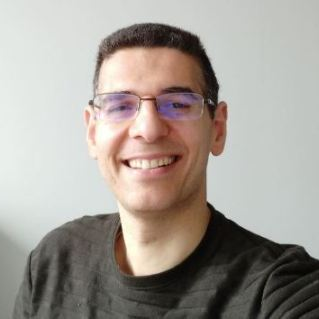Ultrasonic Modelling for Non-destructive Testing
A special issue of Applied Sciences (ISSN 2076-3417). This special issue belongs to the section "Applied Physics General".
Deadline for manuscript submissions: closed (30 September 2022) | Viewed by 32324
Special Issue Editor
Interests: ultrasonics; nondestructive testing; wave propagation in solids and complex media; acoustic/elastic wave scattering and diffraction; surface acoustic waves; ray tracing; high frequency modelling; transducers; acoustic signal processing; noise analysis; artificial intelligence
Special Issue Information
Dear Colleagues,
This Special Issue of Applied Sciences focuses on the advancement of modeling methods for the ultrasonic Non-destructive Testing (NDT) of materials such as metals, concrete, composites, metamaterials, and biomaterials. Ultrasonic techniques are employed for non-destructive purposes in order to evaluate the properties and damage states of structures devised for numerous applications (engineering, building materials, medicine, etc.). With this method, different kinds of material properties (mechanical, chemical, physical, biological, etc.) with various physical states/compositions (e.g., solid, liquid, heterogeneous, inhomogeneous, complex, and moving media) can be investigated. The scope of this Special Issue includes, but is not limited to, ultrasonic wave techniques for classical non-destructive evaluation, structural health and condition monitoring of structures, existing or novel methods for imaging, ultrasonic characterization, non-linear acoustics, acoustic emission, laser ultrasonics, additive manufacturing, medical applications, sensors, and signal and noise analysis.
The current Special Issue aims to explore advances in ultrasonic modeling methods for understanding or predicting NDT inspections. Simulating a NDT measurement generally requires modeling the propagation and scattering of ultrasonic waves from flaws/damage/interfaces and the associated wave characteristics, such as propagation and scattered amplitudes, times of flight, velocities, and attenuation dispersion, which are highly sensitive to material properties. Developed simulation tools may rely on different mathematical/physical theories or assumptions; for instance, semi-analytical, numerical, and hybrid models may be used for direct simulation and model benchmarking, inversion theory for imaging and damage localization, and artificial intelligence.
I invite you to submit novel achievements in the understanding and modeling of ultrasonic waves for NDT applications and welcome high-quality research and review papers on theoretical, practical, and validation aspects.
Prof. Dr. Michel DARMONGuest Editor
Manuscript Submission Information
Manuscripts should be submitted online at www.mdpi.com by registering and logging in to this website. Once you are registered, click here to go to the submission form. Manuscripts can be submitted until the deadline. All submissions that pass pre-check are peer-reviewed. Accepted papers will be published continuously in the journal (as soon as accepted) and will be listed together on the special issue website. Research articles, review articles as well as short communications are invited. For planned papers, a title and short abstract (about 100 words) can be sent to the Editorial Office for announcement on this website.
Submitted manuscripts should not have been published previously, nor be under consideration for publication elsewhere (except conference proceedings papers). All manuscripts are thoroughly refereed through a single-blind peer-review process. A guide for authors and other relevant information for submission of manuscripts is available on the Instructions for Authors page. Applied Sciences is an international peer-reviewed open access semimonthly journal published by MDPI.
Please visit the Instructions for Authors page before submitting a manuscript. The Article Processing Charge (APC) for publication in this open access journal is 2400 CHF (Swiss Francs). Submitted papers should be well formatted and use good English. Authors may use MDPI's English editing service prior to publication or during author revisions.
Keywords
- Ultrasonic wave modeling
- Non-destructive Testing/Evaluation (NDT/NDE)
- Material properties
- Structural Health Monitoring (SHM) and Metamaterials
- Ultrasonic imaging and inversion
- Ultrasonic characterization
- Non-linear acoustics
- Acoustic Emission (AE)
- Laser Ultrasonics
- Signal and noise analysis
- Wave propagation and scattering
- Semi-analytical, numerical, and hybrid models and benchmarking
- Artificial intelligence and machine learning
- Medical applications and imaging
- Additive manufacturing





